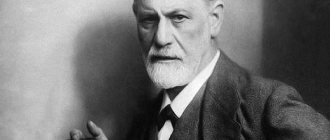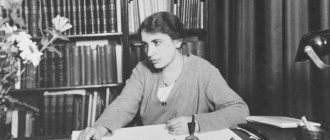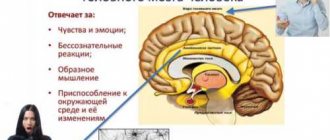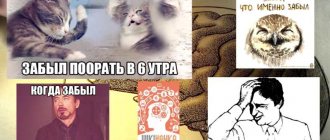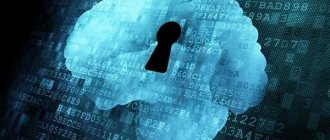Nowadays all kinds of aphorisms about the meaning of life are in fashion. Here are some of the most popular:
“The more perfect a person is on the outside, the more demons he has inside.” “The only person you should compare yourself to is your past self. And the only person you should be better than is you now.” “A person never gives up anything, he simply replaces one pleasure with another.”
But, putting these beautiful phrases in statuses, publishing them on social networks, quoting them in companies, most people do not even realize that they belong to the famous psychologist of the first half of the 20th century, Sigmund Freud, and reflect the whole essence of his teaching, known as psychoanalysis.
What is psychoanalysis
Psychoanalysis is a psychotherapeutic direction created by Freud, an effective method of treating various mental disorders that has gained wide popularity.
This is the first direction in psychology and psychotherapy, worked out in detail in terms of theory. Two hypostases of a person’s personality are clearly described - the unconscious (hidden, repressed, unconscious) and the conscious (superficial, visible, conscious, understandable). They constantly come into conflict with each other - hence the internal conflicts that ultimately lead to mental disorders. But the most important thing is that the unconscious almost always wins. It is this that becomes the motivator of most actions and decisions. The task of psychoanalysis is to open it and transfer it to the plane of consciousness.
Being a key concept, personality in psychoanalysis is maximally represented from the point of view of both hidden and conscious motives that determine its development and improvement throughout life.
What does this direction study? The subject of the study is hidden motives from the unconscious that provoke the development of various psycho-emotional disorders of personality and behavior. They are revealed through the free flow of thoughts expressed by the analysand (patient).
Today, the psychoanalytic direction is represented by different schools. But they are all united by basic concepts - the division into the conscious and unconscious and the search for the origins of problems in childhood. In psychology, this is a powerful tool for eliminating unconscious mechanisms and habitual patterns that interfere with the realization of desires and social adaptation.
Psychological defense mechanisms
The founder of psychoanalysis argued that the human psyche, tuned to pleasure and aggression, creates protection. This formalizes behavior within a framework acceptable to society.
- Negation. A person at an unconscious level denies obvious facts. For example, the harm of drugs or the destructiveness of relationships.
- Repression helps to get rid of unacceptable stimuli. In their place are placed incentives that are pleasing to society or the moral principles of the person himself. Good manners developed in a child by strict parents may limit his need to behave more freely.
- Projection appears when a person cannot come to terms with his true motives, feelings and desires. He transfers them to those who do not have them. This is where stories appear about people’s actions that they did not commit.
- Identification is the reverse phenomenon of projection. In this case, a person ascribes to himself qualities that are alien, but desirable for him. A person endows himself, for example, with courage that is not characteristic of him.
- Rationalization. A person finds a reasonable explanation for his actions. But, at the same time, his actions are based on reasons that resonate painfully in his consciousness.
- Inclusion. Traumatic stimuli are devalued by their introduction into the system of stronger incentives. For example, problems in the family become less significant against the background of global problems of the country’s economy and standard of living.
- Substitution. One object of influence is replaced by another, weaker one. For example, a person takes out his anger on family members instead of the boss who angered him. At the same time, the boss acts as a figure with stronger influence.
- Insulation. Traumatic stimuli are repressed into the unconscious. Due to their influence, disorders can be observed: depersonalization and split personality.
- Regression. During protection, a return to previous stages of development is observed. The person returns to the behavior that he used, for example, in adolescence.
- Reactive education. A person’s motives are transformed into opposite phenomena, close to those approved by the social environment. For example, a kind person can act bitterly.
- Sublimation. Energy from inappropriate manifestations is directed into other areas of life. For example, the need for adrenaline is assessed by society as unreasonably senseless. Therefore, a person chooses a profession associated with risk. At the same time, other people will approve of such a choice.
From the history
Freud
The founder of psychoanalysis is Sigmund Freud (1856-1939), a famous Austrian psychologist, psychiatrist and neurologist. Practicing in different hospitals, he gradually accumulated experience in order to later formalize it into one clear and well-founded theory.
- For a long time he worked with patients suffering from neurotic and hysterical character traits.
- Then he consulted aphasic children (with speech impairments). He revealed that their problems are not caused by physiology, but by mental reactions.
- He completed an internship with the famous neurologist J.-M. Charcot, studying general paresis.
As a result of his extensive and varied practice, in 1895 he wrote the book “Studies in Hysteria.” This is the first theoretical basis of psychoanalysis. It is in it that the idea is formulated that the causes of most mental disorders are suppressed, hidden in the unconscious memories of traumatic situations from childhood. Here Freud suggested that they are all somehow connected with sexual desires.
In 1900, his second major work, “The Interpretation of Dreams,” was published. It describes the meaning of dreams for the human psyche. In his opinion, it is they who reveal the essence of the unconscious, which manifests itself in the form of symbols. They just need to be decrypted. The same book presents a detailed “topographic model of the psyche,” its structure and operating principle. According to her, social prohibitions and educational frameworks displace indecent sexual desires into the realm of the unconscious. This process almost always ends with a feeling of increased anxiety and the development of mental disorders.
Sigmund Freud (1856-1939)
Freud's psychoanalysis (Freudianism) subsequently constantly developed, expanded and was critically rethought. On its basis, new schools, trends and branches from classical theory appeared. Most often they were led by former colleagues and students of Freud. For example, A. Adler and K. G. Jung. Although on many issues they sharply disagreed with their teacher.
Jung
Many experts note that Jung's psychoanalysis is a direction radically different from Freudianism. Carl Gustav Jung (1875-1961) was a Swiss psychiatrist and teacher who developed the doctrine of archetypes. These are structural elements of the collective unconscious (there are archetypes of the baby, maiden, mother, rebirth, spirit, trickster, etc.). With their help, you can interpret not only dreams, but also myths of different nations. The goal of Jung's direction (as defined by the psychoanalyst himself) is the individuation of the individual. This is a process of mental development when individual abilities (talents) and unique characteristics of a person are fully realized.
Jung's concept of psychological types has gained particular popularity. The classification is based on psychological attitude (extroverted or introverted) and mental functions (thinking, feelings, sensations, intuition).
Neo-Freudianism
The second, later wave of the emergence of new psychoanalytic movements is neo-Freudianism. The most prominent representatives are E. Fromm, K. Horney, G. S. Sullivan, J. Lacan and others. They tried to find common points of contact between psychoanalysis and the social and human sciences.
Erich Fromm (1900-1980) - German sociologist, social psychologist, philosopher, representative of the Frankfurt School. He is the founder of neo-Freudianism and Freudo-Marxism. Linked Freud's psychoanalysis with Marxism and ethics.
Karen Horney (1885-1952) was an American psychologist and a key figure in neo-Freudianism. Shifted the emphasis from sexual desires as the main motivators of human behavior to the impact of the surrounding social environment. She outlined her views and ideas in the book “New Paths in Psychoanalysis.”
In Russia
In Russia, this trend became incredibly popular in the 1920s. Ivan Dmitrievich Ermakov (1875-1942) was a Russian psychiatrist and psychologist, who was also an artist and literary critic. Considered a pioneer of Freudianism in the USSR. He founded the State Psychoanalytic Institute and translated the works of Freud and Jung into Russian. Since the 1930s. psychoanalysis was persecuted and forgotten until the 1990s.
Modern psychoanalysis has more than 20 schools and movements. Their theories and approaches to treating disorders differ so radically that it is extremely difficult to find one source for them.
Briefly and clearly about Freud's psychoanalysis
Based on the above, we can consider the essence of psychoanalysis at three levels:
1. psychoanalysis - as a method of psychotherapy;
2. psychoanalysis - as a method of studying personality psychology;
3. psychoanalysis - as a system of scientific knowledge about worldview, psychology, philosophy.
Having examined the basic psychological meaning of psychoanalysis, in the future we will refer to it as a worldview system.
As a result of creative evolution, S. Freud considers the organization of mental life in the form of a model, which has as its components various mental authorities, designated by the terms: It (id), I (ego) and super-ego (super-ego).
The It (id) was understood as a more accepted authority that embraces everything innate, genetically primary, subordinate to the principle of pleasure and knowing nothing about reality or society.
She is inherently irrational and immoral. Its requirements must be satisfied by the instance of the I (ego).
The ego follows the principle of reality, developing a number of mechanisms that allow it to adapt to the environment and cope with its requirements.
The ego is an intermediary between stimuli coming both from this Environment and from the depths of the organism, with
on the one hand, and response motor reactions on the other.
The functions of the ego include self-preservation of the body, imprinting the experience of external influences in memory, avoiding threatening influences, and controlling the demands of instincts (coming from the id).
Particular importance was attached to the superego (superego), which serves as a source of moral and religious feelings, a controlling and punishing agent.
If the id is genetically predetermined, and the ego is a product of individual experience, then the superego is a product of influences emanating from other people. It arises in early childhood (associated, according to Frame, with the Oedipus complex) and remains virtually unchanged in subsequent years.
The super-ego is formed due to the mechanism of identification of the child with the father, who serves as a model for him. If the I (ego) makes a decision or takes an action to please the It (id), but in opposition to the super-I (super-ego), then It experiences punishment in the form of ephors of conscience, feelings of guilt. Since the super-ego draws energy from the id, the super-ego often acts cruelly, even sadistically.
From the stresses experienced under the pressure of various forces, the I (ego) is saved with the help of special “defense mechanisms” -
repression, rationalization, regression, sublimation, etc. Repression means the involuntary elimination of feelings, thoughts and desires for action from consciousness. Moving into the area of the unconscious, they continue to motivate behavior, put pressure on it, and are experienced in the form of a feeling of anxiety. Regression is a slippage into a more primitive level of behavior or thinking.
Sublimation is one of the mechanisms by which forbidden sexual energy, moving to non-sexual objects, is discharged in the form of activity acceptable to the individual and society. A type of sublimation is creativity.
Freud's teaching became famous primarily for penetrating the recesses of the unconscious, or, as the author himself sometimes said, “ the underworld
» psyche.
However, if we limit ourselves to this assessment, we may lose sight of another important aspect: Freud’s discovery of complex, conflictual relationships between consciousness and unconscious mental processes seething beneath the surface of consciousness, along which the subject’s gaze glides during self-observation. Man himself, Freud believed, does not have before him a transparent, clear picture of the complex structure of his own inner world with all its currents, storms, and explosions.
free association ” is called upon to help.
". Following the biological style of thinking, Freud identified two instincts, the instinct of self-preservation that drives behavior and the sexual instinct, which ensures the preservation of not the individual, but the entire species.
This second instinct was elevated by Freud to the category of psychological dogma (reference to Jung) and called libido
. The unconscious was interpreted as a sphere saturated with the energy of libido, a blind instinct that knows nothing except the principle of pleasure that a person experiences when this energy is discharged. Suppressed, repressed sexual desire was deciphered by Freud from the associations of his patients free from consciousness control.
Freud called this decoding psychoanalysis. Freud, examining his own dreams, came to the conclusion that " the scenario
"dreams, with its apparent absurdity, are nothing more than a code of hidden desires, which are satisfied in the images - symbols of this form of nightlife.
The idea that our everyday behavior is influenced by unconscious motives was discussed by Freud in his book The Psychopathology of Everyday Life (1901). Various erroneous actions, forgetting names, slips of the tongue, slips of the tongue are usually considered accidental and are explained by a weakness of memory.
According to Freud, hidden motives break through in them, because there is nothing random in a person’s mental reactions. Everything is causal. In another work, Wit and Its Relation to the Unconscious (1905), Freud interprets jokes or puns as a release of tension created by the restrictions that various social norms impose on the individual's consciousness.
The scheme of psychosocial development of personality from infancy to the stage at which natural attraction to a person of the opposite sex arises is discussed by Freud in “Three Essays on the Theory of Sexuality” (1905).
One of Freud's leading versions is the Oedipus complex, as the eternal formula of a boy's relationship to his parents: the boy is attracted to his mother, perceiving his father as a rival who causes both hatred and fear.
During the First World War, Freud made adjustments to his scheme of instincts. Along with the sexual in the human psyche there is an instinct of the desire for death (Thanatos as the antipode of Eros), according to Freud, this instinct also includes the instinct of self-preservation. The name Thanatos meant not only a special attraction to death, but also to the destruction of others, a desire for aggression, which was elevated to the rank of a well-known biological impulse inherent in the very nature of man.
Kinds
Classic Freudianism
The basic concept in a nutshell: any mental disorder is the result of a conflict between the unconscious (formed under the influence of psychosexual development) and the conscious (dictated by upbringing and social norms).
Jungian psychoanalysis
Another name is analytical (complex) psychology. The goal is to comprehend and integrate the deep forces and motivations of human behavior through the phenomenology of not only dreams (as in Freud), but also folklore and mythology. The key concept is the collective unconscious.
Statistical
Olga Pertseva’s author’s technique, based on the square (psychomatrix) of Pythagoras. Allows you to create a digital portrait of a person, uncomplicated by society’s patterns imposed by patterns of thinking and behavior. One of the directions in numerology.
Existential
The technique of existential psychotherapy developed by J.-P. Sartre. According to her, a person is a complete integrity, and not a complex of behavior patterns that come into conflict with sexual instincts (as with Freud). The main tool is observation.
Humanistic
The founder is Fromm. Denies the leading role of sexual desires in personality development. Focuses attention on other factors of its formation - sociological, political, economic, religious and cultural.
Structural
The founder is J. Lacan. A direction that uses the special meaning of language to characterize the unconscious. It is actively used for the treatment of speech disorders caused by mental disorders and childhood trauma.
Ego psychology
The leading role in the psyche is assigned to the Ego (according to the classical concept, it was played by the Id). Representatives: A. Freud (the youngest daughter of Sigmund Freud), E. Glover, E. Erikson.
Object Relations Theory
The basis of the British school of psychoanalysis. The basic idea is that people’s attitudes towards the world around them in adulthood are formed under the influence of experiences in childhood. The main representatives are M. Klein and D. Sandler.
Modern schools with a psychoanalytic approach to the treatment of disorders are also Kohut's Self psychology, Sullivan's interpersonalism and Stolorow's intersubjectivism.
Major discoveries
Freud made several fundamental discoveries in the field of psychology, introducing new trends and concepts. These include:
- Unconscious. By the Unconscious, Freud understood a special area of the psyche, the presence of which a person is not aware of. The unconscious seeks to subjugate the will and relieve the human individual from the pressure of moral standards.
- Libido. Freud called it the engine of the individual's mental life. Libido activity affects ambitions and aspirations. Freud draws a parallel between sexual and social activity: a man’s libido is stronger than a woman’s, so he has a stronger need for sex and a desire for competition.
- Interpretation of dreams. The unconscious constantly tries to overpower the will of the individual and sends him signals reminding him of suppressed desires. A person receives these signals in the form of dreams. To get rid of anxiety, you need to analyze dreams and find the true causes of discomfort.
- Neuroticism. Freud grouped mental disorders caused by suppression of impulses into one group and called them nervous diseases or neuroticism. All people existing within European culture are susceptible to neuroticism, since they are distant from nature and are forced to constantly control their natural needs.
Not all contemporaries welcomed Freud's ideas; some criticized them. Karen Horney, an American psychoanalyst, in one of her works examined in detail Freud's theory of women's envy of the male penis and suggested that in fact a man is jealous of the presence of a uterus and the ability to reproduce, and the driving force of the human personality is not libido, but anxiety. Karen's bold views made her one of the iconic figures of neo-Freudianism.
Theory
An analysand is a patient with whom a psychoanalyst works.
Metapsychology is the entire theory of psychoanalysis.
Topographic model of the psyche:
- conscious - its superficial, understandable, visible part;
- unconscious - hidden, incomprehensible, mysterious, unconscious;
- preconscious - borderline, located in the area of the unconscious, but breaking out during certain situations of choice or in dreams.
Structural model of the psyche:
- Id (It) - instinct, obeys the principle of pleasure;
- Ego (I) - contact with the outside world through perception, controls behavior and thinking;
- Superego (Super-I) - moral norms, values based on moral prohibitions and formed in the process of education.
Personality structure according to S. Freud
Stages of psychosexual development - experience that leaves an imprint in the form of moral attitudes, character traits, behavior patterns:
- Oral phase (from birth to 1.5 years) - dominance of the id.
- Anal (1.5-3.5) - the formation of the super-ego under the influence of norms, rules, restrictions, prohibitions.
- Phallic (3.5-6) - increased interest in sex, which most often leads to Oedipus or Electra complexes.
- Latent (6-12) - absence of manifestations, break.
- Genital, adult (from 12 years old).
A protective psychological mechanism is an unconscious mental process aimed at eliminating negative experiences:
- substitute;
- compensatory;
- displacing;
- denying;
- projecting;
- sublimating;
- rationalizing;
- retrogressive.
These are the basic defense mechanisms described by Freud. Today the list has been significantly expanded and includes more than 30 mental processes.
Basics
Key points:
- human behavior, knowledge of the surrounding world and experience are determined by internal drives;
- they are irrational and unconscious;
- attempts to understand them cause psychological resistance, which manifests itself in the form of defense mechanisms;
- individual characteristics of behavior and personality depend on events that occurred in early childhood, at different stages of psychosexual development;
- conscious perception of the surrounding world and the material of the unconscious (repressed) come into conflict with each other;
- it leads to various psycho-emotional disorders: neuroses, depression, neurotic character traits, phobias;
- You can free yourself from the area of the unconscious if you become aware of it (but this can only be done with the help of a professional).
These are the basic ideas of psychoanalysis on which work with the patient is based.
Practice
General treatment regimen
The analysand verbalizes (pronounces) thoughts based on free associations that arise in his head, as well as fantasies and dreams.
Next, the psychoanalyst, based on this material, finds unconscious conflicts that are the causes of all the problems of the analysand.
He eventually interprets them to find a way to solve problems.
Examples from Freud's private practice
In his works, Freud described in detail not only the theory of psychoanalysis, but also the clinical cases that he himself encountered. There are 43 of them in total, but 5 of them are the most famous. They demonstrate how psychiatrists should tailor their sessions depending on the diagnosis they are dealing with.
The psychoanalytic approach is effective for diagnoses such as:
- alarming and conversion hysteria;
- obsessive-compulsive neurosis;
- psychoneurotic depression;
- neurotic character traits;
- phobias;
- psychosomatics.
Contraindications are various forms of schizophrenia and manic-depressive psychosis. The psychoanalytic approach to the treatment of impulsive neurosis, perversion, addictions and deviant behavior is decided on an individual basis.
Methods of psychoanalysis
Free associations
Is the basic rule of psychoanalysis. The projective method consists in asking the analysand to freely say whatever comes to mind. At the same time, he can even express what seems absurd and obscene to him. The task of the psychoanalyst is to see in this stream of thoughts, isolate and analyze the unconscious, and connect it with the patient’s childhood and dreams.
Dream interpretation
The analysand is asked to tell all his dreams in the smallest detail over several sessions. It is in them that the unconscious is hidden. In his work The Interpretation of Dreams, Freud explained the meanings of many dream symbols that are still used in psychoanalysis today. Most of them are associated with hidden sexual desires.
Interpretation
The central stage of any psychoanalysis session. The psychoanalyst deciphers symbols from free associations and dreams for the patient and explains the essence of the internal conflict. The analysand, in turn, must accept and understand this interpretation. Only in this way can he begin to undermine the system of stagnant pathological, obsessive experiences that has developed on the basis of the contradictions of the unconscious and the conscious.
Resistance
A protective mechanism of the psyche that prevents penetration into the unconscious. This is the force that maintains the painful state. It prevents the patient from saying everything that is in his head. Often this is upbringing or social stereotypes.
Transfer
Another name is transfer. Unconscious transfer of previously experienced feelings to a completely different person (not the one to whom they were directed before). Including a psychoanalyst.
Elaboration
The last stage with the analysand is when a restructuring of the psyche occurs. The main task is to change habitual behavior and established relationships through liberation from pathogenic patterns.
These are the main techniques used by a psychoanalyst in working with various mental disorders.
Psychoanalytic direction
The most powerful and diverse movement in modern psychology is the psychoanalytic movement, which owes its emergence to Freud's psychoanalysis. The most famous works of the psychoanalytic direction are individual psychoanalysis by Adler and analytical psychoanalysis by Jung.
In their writings, Alfred Adler and Carl Jung supported the theory of the unconscious, but tried to limit the role of intimate impulses in the interpretation of the human psyche. As a result, the unconscious acquired new content. According to A. Adler, the content of the unconscious was the desire for power as a tool to compensate for feelings of inferiority.
Jung's psychoanalysis in brief: G. Jung laid the foundation for the concept of the “collective unconscious.” He believed that the unconscious psyche is permeated with structures that cannot be acquired individually but are the gift of distant ancestors, while Freud believed that the unconscious psyche of a subject may contain phenomena previously banished from consciousness.
Jung further develops the concept of two poles of the unconscious, collective and personal. Jung called the surface layer of the psyche, which includes all the contents associated with personal experience, that is, forgotten memories, repressed drives and desires, forgotten traumatic impressions, the personal unconscious. It depends on the subject's personal history and can be awakened in fantasies and dreams. He called the collective unconscious the superpersonal unconscious of the psyche, which includes drives, instincts, which in the individual represent the natural creation, and archetypes in which the human soul is located. The collective unconscious includes national and racial beliefs, myths and prejudices, as well as some of the heritage that people have adopted from animals. Instincts and archetypes play a role in regulating a person's inner life. Instinct determines the specific behavior of the subject, while the archetype determines the specific formation of the conscious contents of the psyche.
Jung distinguished between two types of people: extrovert and introvert. The first type is characterized by an external orientation and preoccupation with social activities, while the second is characterized by an internal orientation and concentration on personal drives. Jung referred to these subjective drives with the term "libido" in the same way as Freud, but Jung did not equate the term "libido" with the sexual instinct.
Thus, Jung's psychoanalysis is a complement to classical psychoanalysis. Jung's philosophy of psychoanalysis had a significant influence on the further development of psychology and psychotherapy, as well as anthropology, ethnography, philosophy and esotericism.
Adler, transforming the original postulate of psychoanalysis, identified the feeling of inferiority, caused primarily by physical defects, as a factor in personality development. In response to these feelings, there is a desire to compensate for them in order to gain an advantage over others. The source of neuroses, in his opinion, lies in an inferiority complex. He fundamentally disagreed with the statements of Jung and Freud about the predominance of personal unconscious instincts in human behavior and personality, which contrast and alienate a person from society.
Summary of Adler's psychoanalysis: Adler argued that a sense of community, which stimulates social interaction and orientation towards others, is the main force driving human behavior and determining the life of an individual, not innate archetypes or instincts.
However, the three concepts—Adler's individual psychoanalysis, Jung's psychoanalytic theory, and Freud's classical psychoanalysis—have something in common: they all argued that man has an inner, individual nature that influences the formation of personality. Only Freud assigned a decisive role to sexual motives, Adler noted the role of social interests, and Jung attached decisive importance to primitive types of thinking.
Another staunch supporter of Freud's psychoanalytic theory was E. Berne. Developing the ideas of classical psychoanalysis and developing methods for treating neuropsychiatric disorders, Berne focused his attention on the so-called transactions that form the basis of human relationships. Berne's Psychoanalysis: He considered three states of the ego, namely: child, adult and parent. Berne suggested that in any interaction with the environment the subject is always in one of these states.
Bern's Introduction to Psychoanalysis - This work was designed to explain the dynamics of the individual psyche and analyze the problems faced by patients. Unlike his fellow psychoanalysts, Berne believed that it was important to reduce the analysis of an individual's problems to the life history of his parents and other ancestors.
Bern's "Introduction to Psychoanalysis" is devoted to the analysis of the types of "games" used by people in everyday communication.
Criticism
Throughout its existence, the psychoanalytic approach in psychology has been criticized from various points of view.
The main points of criticism:
- long course of therapy (Freud described a case where he conducted 1,017 sessions over 6 years of treating one patient);
- high risk of iatrogenic effects and conformism;
- ineffectiveness of short-term use;
- behavioral psychotherapy is 2 times more effective than psychoanalysis;
- the patient does not work on himself, he is completely dependent on the psychoanalyst;
- The irrationalism of the psychoanalytic trend is too confusing and not understandable to many people.
English biologist Peter Medawar called psychoanalysis the largest intellectual fraud of the twentieth century.
Despite all the criticism, the philosophy of psychoanalysis has played an important role in the development of society. It is actively used in almost all humanities. Without it, even the sexual revolution would have been impossible. Now this direction, represented by more than 20 schools and individual movements, is practiced as widely and often as it was a hundred years ago when it was created.
Research
For over a hundred years, case reports in Modern Psychoanalysis, Psychoanalytic Quarterly, International Journal of Psychoanalysis, and the Journal of the American Psychoanalytic Association have assessed the effectiveness of psychoanalysis for neuroses and character and personality disorders. Psychoanalysis, modified by object relations techniques, has been effective in many complex cases of disturbances in the areas of intimacy and interpersonal relationships (see numerous publications by Otto Kernberg). As a therapeutic method, psychoanalytic techniques can also be useful in one-time consultations. Psychoanalytic treatment in other cases can last from a year to many years, depending on the severity and complexity of the pathology.
Psychoanalytic theory has been the subject of criticism and controversy since its inception. Freud noted this early in his career, when he was ostracized by medical circles in Vienna for his discovery that hysterical conversion symptoms were not limited to women. Criticism of psychoanalytic theory began with Otto Rank and Alfred Adler (in the early 20th century), continued within behaviorism (e.g. Wolpe) in the 1940s and 1950s, and continues today. Criticism comes from those who do not agree with the concept of the existence of unconscious mechanisms, thoughts or feelings. The claim of "childhood sexuality" (the description that children between the ages of two and six fantasize about procreation) has also been criticized. The criticism led to modifications of psychoanalytic theory, such as the work of Ronald Fairbairn, Michael Balint and John Bowlby. In recent decades, criticism has focused on the issue of empirical verification—despite multiple empirical prospective studies (see, for example, the work of Barbara Milord and her colleagues at Cornell University School of Medicine). In modern scientific literature one can find studies that support many of Freud's ideas, such as the unconscious, regression, etc.
Psychoanalysis has been used as a research tool in child development (see the journal The Psychoanalytic Study of the Child), and has developed into a flexible, effective method of treating mental disorders. In the 1960s, Freud's early (1905) ideas about child development and female sexuality were revised. This led to extensive research in the 1970s and 1980s and subsequent new concepts of female sexual development that corrected some of Freud's positions. See also numerous works by Eleanor Galenson, Nancy Chodorow, Karen Horney, Françoise Dolto, Melanie Klein, Selma Freiberg and others. More recently, researchers incorporating attachment theory into their work (e.g., Alice Lieberman, Susan Coates, and Daniel Schechter) have explored the role of parental trauma in young children's development of mental representations of self and others.
Several meta-studies have shown that psychoanalysis and psychodynamic psychotherapy are comparable in effectiveness to or superior to other types of psychotherapy or treatment with antidepressant medications. Empirical research suggests that “classical” long-term psychoanalysis—where the patient lies on a couch at least three times a week—is also effective. A 2005 review of randomized and controlled trials concluded that "psychoanalytic psychotherapy is (1) more effective than no treatment or standard treatment and (2) more effective than short forms of psychodynamic psychotherapy." Empirical research into the effectiveness of psychoanalysis and psychoanalytic psychotherapy has become popular among psychoanalytically oriented researchers.
Studies of the effectiveness of psychodynamic treatment in some populations have shown conflicting results. Research by Bertram Caron and his colleagues at Michigan State University suggests that careful use of psychodynamic therapy can be successful in the case of patients with schizophrenia. More recent studies question the validity of this claim. Thus, a report from the Schizophrenia Patient Outcomes Research Team (PORT) does not recommend the use of psychodynamic forms of psychotherapy for schizophrenia, indicating that additional research is needed to confirm their effectiveness. However, the PORT recommendation is based on expert clinician opinion rather than empirical evidence. There is empirical evidence that contradicts this recommendation.
There are various forms of psychoanalysis and psychotherapy that practice psychoanalytic thinking. For example, in addition to classical psychoanalysis, psychoanalytic psychotherapy. Other examples of common therapeutic methods that use the findings of psychoanalysis are Mentalization-Based Treatment and Transference-Focused Psychotherapy.




